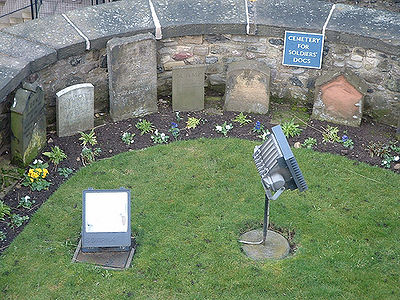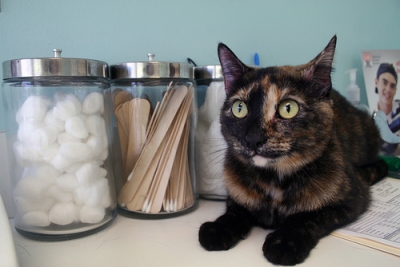
Final Goodbyes – Euthanasia in pets
There comes a time in every animal owner´s life when you have to make some very difficult decisions and say your final goodbyes to a beloved pet. This decision is never easy to come to but it is one of the most important ones you will ever make for them. Euthanasia is a blessing that the veterinary world has; the ability to relieve an animal´s suffering before it becomes too great. Many people cling to the hope that their precious pet will slip away peacefully in their sleep, so they will never have to make that final, heart-breaking trip to the vets. However, it rarely happens that way and it is possible to leave an animal too long, waiting for the moment they will pass away by themselves. Although it can be distressing, it is important to think about your pet´s final day, how you would like it to go and what you would like to do with their body. It can be extremely difficult to consider things clearly through the grief, so if you have discussed and decided beforehand, it will make a significant difference.
How do I know when its time?
The circumstances through which an animal will come to the end of its life are varied. Maybe they are old and have been slowing down for some time, or have been suffering with an illness that has finally overtaken them. Sometimes, more tragically, it can be very fast, an injury from which they will never recover or a sudden decline in health that was not expected. In many cases the decision is taken away from you, as it is clear what needs to be done, but in others, especially when an older animal has been slowing down for some time, it can be difficult to decide when to say goodbye. What is paramount is the animal´s quality of life and whether living is still the joy it should be, or whether it is now a struggle. Try asking yourself these questions if you are confused;
- Does your pet get up to greet you in the morning and when you come home, or do they stay in their bed, uninterested in your presence?
- Are they still keen to eat their food and look forward to meals or do they have to be tempted to eat?
- Are they able to get up and about, to do their toilet and enjoy the sunshine, or are they unable or unwilling to move themselves?
- Are they interested in their own comfort? Will they find a comfortable spot to lie in, or will they just flop down wherever they are?
Animals for whom life has become a trial are often uninterested in their surroundings, their owners or themselves. It is a cliché but it is true, when the time comes for a pet you have known for a long time, you do know when you make that decision that you are doing the right thing. This does not necessarily make it any easier, but it does mean you know in your heart it is the correct path to take.
How is it done?
The first thing to decide is where you would like your pet put to sleep. Most people will bring them to the vets, but a few prefer the vet to come out to their homes. Remember it will be more expensive to call the vet out, and they may not be able to come at a time of your choosing, as they will be busy in the surgery. However, vets will always be sympathetic at a time like this and do their best to accommodate you. If you come to the surgery, always let the receptionist know why you are coming. A good receptionist will book you in at the beginning or end of a clinic, so you will not have to wait too long. If you do not wish to stay in the waiting room, simply let the staff know. They should always be able to put you in a private room, or call you in from the car when they are ready.
When an animal is put to sleep, a lethal injection is given into one of its veins. This travels directly to the heart and the brain, stopping the heart and making the animal lose consciousness. It works within seconds. In cats and dogs this is usually into one of the veins that runs in the front leg. In horses, it is given into the jugular vein in the neck. In rabbits a vet may use an ear vein but often will give the injection into the chest or tummy. In smaller animals such as guinea pigs, hamsters and rats, their veins are too small for the needles, so again the injection would be given into the chest or abdomen.
All your pet will feel is the prick of the needle, and then the feeling for them is exactly the same as going to sleep in their basket at night. Some vets will use a local anaesthetic to numb the skin, others may place a catheter into the vein. This means when the injection is given, there is no pain and with a catheter, should your pet move, they will not need to be injected again.
If your pet is fractious or nervous in the vets, do let them know. It is very important they stay still for the injection and don´t struggle. If you feel this may be a problem it is possible for the vet to sedate your pet beforehand so they remain relaxed and calm. It can be extremely distressing for both you, your pet and the vet, if something goes wrong.
The vet will ask you to sign a form giving them permission to go ahead and they will bring a nurse in to help them hold your pet. The nurse will hold the front leg steady for the vet to inject. If you want to stay with your pet you will be able to hold their head and talk to them. If you do not wish to stay, simply let the vet know. They will give you a few minutes to say goodbye in private.
Once it is over the vet will check their heart to ensure they are gone. In the first few minutes afterwards they may quiver or gasp but it is just the energy leaving the muscles. They may also lose control of their bowels or bladder but do not worry, the vet will know to expect it and will not mind.
Take as long as you need to say goodbye, do not feel like you have to leave straight away, vets know this is difficult time and will understand. Do not forget to take you pets collar and lead if you wish.
What happens next?
Once it is done you will then have to decide what you wish to do with your pet´s body. In general there are three options. You can take them home to bury, but this can be difficult with larger dogs.You can let the vets look after them and the body will be cremated. The third option is that an individual cremation can be arranged and you can have your pet´s ashes returned to you. This can be expensive and will generally cost from £100 upwards. However, you will be able to keep your pet, or bury them more easily, since they are usually returned in a wooden casket.
It is better if you think about these options beforehand. That will allow you to discuss with the family what would be best and also you won´t have make any decisions on the day, which will be upsetting enough. However, if you cannot decide at the time, simply let the vet know, they will be able to look after your pet´s body for a couple of days.
Coming to the end of your pet’s life and having them put to sleep is never easy. There are important decisions to make with respect to whether you wish to stay with your pet, who would like to be there, where you would like it done and what to do with the body. Although it is difficult, try to think things through before it comes to the day, this will mean it is much less stressful and you will be able to grieve without distractions. Your vet will always be sympathetic, they may have done it many times but they will not be immune to the grief and distress. They will do their best to ensure everything goes smoothly and your wishes are accommodated. Above all, it is the best interests of your pet that you and the vet have at heart. Deciding to end their lives is never easy, but it is the kindest way. Very rarely do animals die on their own and without suffering. Euthanasia is a blessing and one of the most important things you will ever do for a pet.
By Cat The PetStreet Vet. http://www.petstreet.co.uk/ PetStreet is the UK’s leading social network for pet-lovers.

